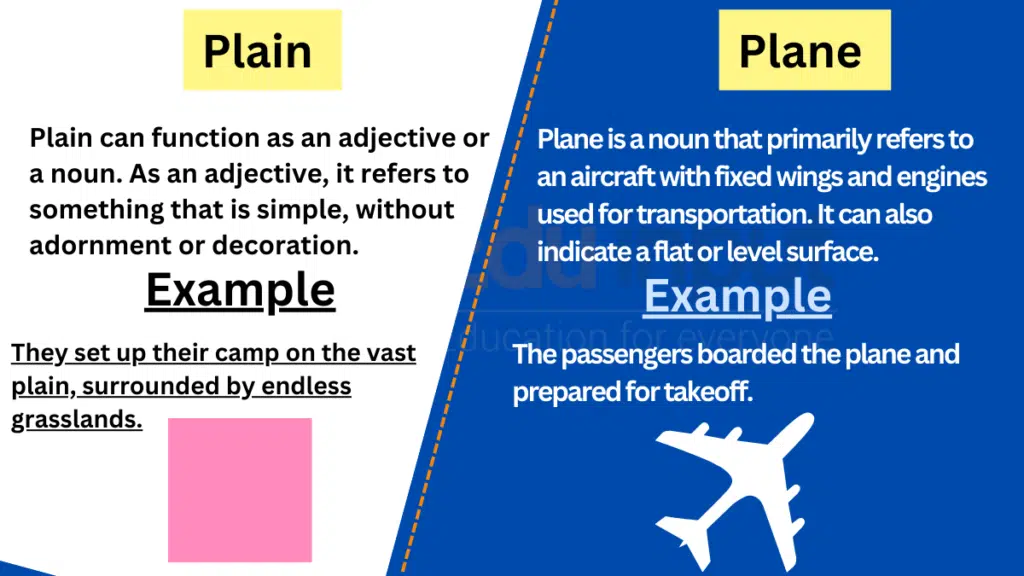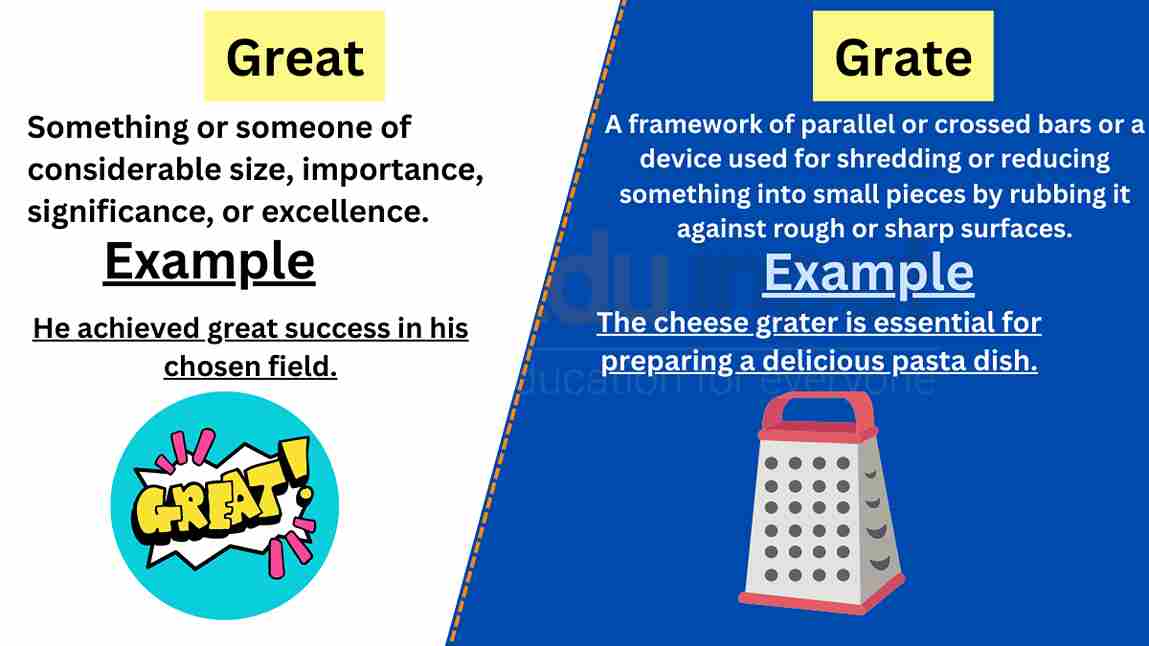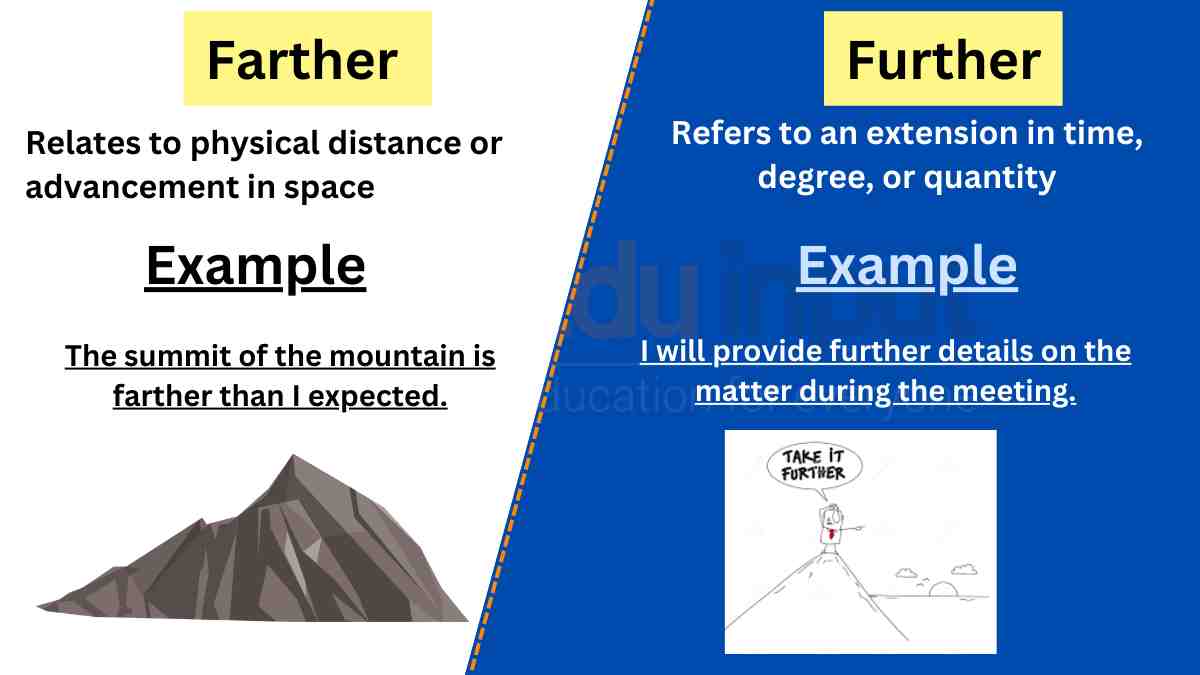Plain vs. Plane-Difference between and Examples
In the English language, certain words may sound alike but possess different meanings, leading to confusion and misunderstandings. Two such words that often cause confusion are “plain” and “plane.” Despite their similar pronunciation, these words have distinct definitions and usage. This article aims to shed light on the difference between “plain” and “plane” by providing clear explanations and examples. Let’s explore the worlds of simplicity and aviation to understand their unique meanings.

Meanings and Examples
Plain meaning
Plain can function as an adjective or a noun. As an adjective, it refers to something that is simple, without adornment or decoration. It can also indicate something that is clear, evident, or easily understood. As a noun, “plain” refers to a large area of flat or gently rolling land.
Plain Examples
a) She preferred plain clothing without any embellishments.
b) The instructions were written in plain language for easy comprehension.
c) They set up their camp on the vast plain, surrounded by endless grasslands.
Plane meaning
Plane is a noun that primarily refers to an aircraft with fixed wings and engines used for transportation. It can also indicate a flat or level surface.
Plane Examples
a) The passengers boarded the plane and prepared for takeoff.
b) He used a plane to smooth out the wooden surface.
c) The table had a polished plane top, perfect for writing or working.
Difference between Plain and Plain
| Plain | Plane | |
| Meaning | Adjective: simple, unadorned, evident Noun: flat land | Noun: aircraft, flat or level surface |
| Example | “She preferred plain clothing without any embellishments.” | “The passengers boarded the plane and prepared for takeoff.” |
| Usage | Simplicity, clarity, large flat land area | Aviation, transportation, flat or level surface |
| Context | Fashion, communication, geography | Aviation, woodworking, surface leveling |
Usage in a Paragraph
The term “plain” can function as both an adjective and a noun. As an adjective, “plain” describes something that is simple and devoid of adornment or decoration. It can refer to clothing choices that are modest and without excessive embellishments. In communication, “plain” language is used to convey information clearly and in a straightforward manner, making it easily understandable to a wide audience. Additionally, “plain” can also refer to a large area of flat or gently rolling land, often found in geography, where expansive grasslands or open fields create a vast and serene landscape.
In contrast, “plane” is a noun that primarily refers to an aircraft used for transportation. Planes have fixed wings and engines that allow them to fly through the air, carrying passengers or cargo. Aviation is a common context where the word “plane” is used. Furthermore, “plane” can also denote a flat or level surface. Woodworkers, for example, use a plane tool to smooth out and level wooden surfaces, ensuring a polished finish. Similarly, a table with a plane top provides a smooth and level working area, suitable for various tasks.
While “plain” and “plane” may sound similar, they have distinct meanings and usage in the English language. “Plain” can function as an adjective or a noun and refers to simplicity, clarity, and unadorned surfaces or large flat land areas. On the other hand, “plane” is a noun primarily associated with aviation and transportation, indicating an aircraft with fixed wings, or a flat and level surface. By understanding their unique definitions and contexts, one can communicate with precision and clarity, avoiding confusion between “plain” and “plane.”







Leave a Reply